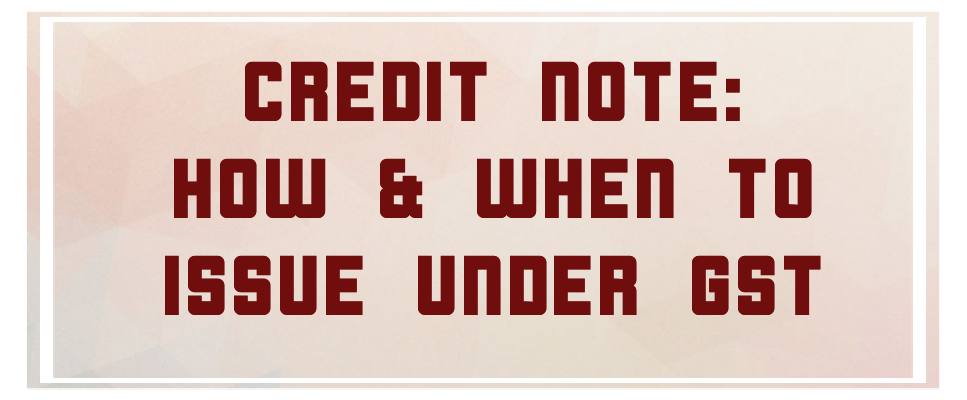What is a Credit note?
Where a tax invoice has been issued for supply of any goods or services and the taxable value or tax charged in that tax invoice is found to exceed the taxable value or tax payable in respect of such supply, or where the goods supplied are returned by the recipient, or where goods or services or both supplied are found to be deficient, the registered person, who has supplied such goods or services may issue a credit note to the recipient indicating the same.
The issuance of credit note is a convenient and legal method by which the value of the goods or services in the original tax invoice can be amended or revised. The issuance of the credit note will easily allow the supplier to decrease his tax liability in his returns without requiring him to undertake any tedious process of refunds.
What are the situations under which Debit note is issued?
A credit note could be issued under the following illustrative situations:
- The supplier has erroneously declared a value which is more than the actual value of the goods or services
provided. - The supplier has erroneously declared a higher tax rate than what is applicable for the kind of the goods or
services supplied. - The quantity received by the recipient is less than what has been declared in the tax invoice.
- The quality of the goods or services or both supplied is not to the satisfaction of the recipient thereby necessitating
a partial or total reimbursement on the invoice value. - Any other similar reasons.
Format of a Credit note
There is no prescribed format but credit note issued by a supplier must contain the following particulars:
- Name, address and GSTIN of the supplier.
- Nature of the document
- A consecutive serial number not exceeding sixteen characters, just like an invoice.
- Date of issue
- Name, address and GSTIN of the recipient.
- Name and address of the recipient and the address of delivery, along with the name of State and its code, if such recipient is unregistered.
- Serial number and date of the corresponding tax invoice or, as the case may be, bill of supply.
- Value of taxable supply of goods or services, rate of tax and the amount of the tax credited to the recipient.
- Signature or digital signature of the supplier or his authorized representative.
Impact on tax liability on issuance of Credit note
The person who issues a credit note in relation to a supply of goods or services or both must declare the details of such credit note in the return for the month during which such credit note has been issued.
The output tax liability of the supplier gets reduced once the credit note is issued and it is matched with the corresponding reduction in the claim for the input tax credit by the recipient in his valid return for the same tax period or any subsequent tax period.
Maintenance of records
The records of the credit note have to be retained for at least 6 years from the due date of furnishing of annual return for the year pertaining to such accounts and records.
